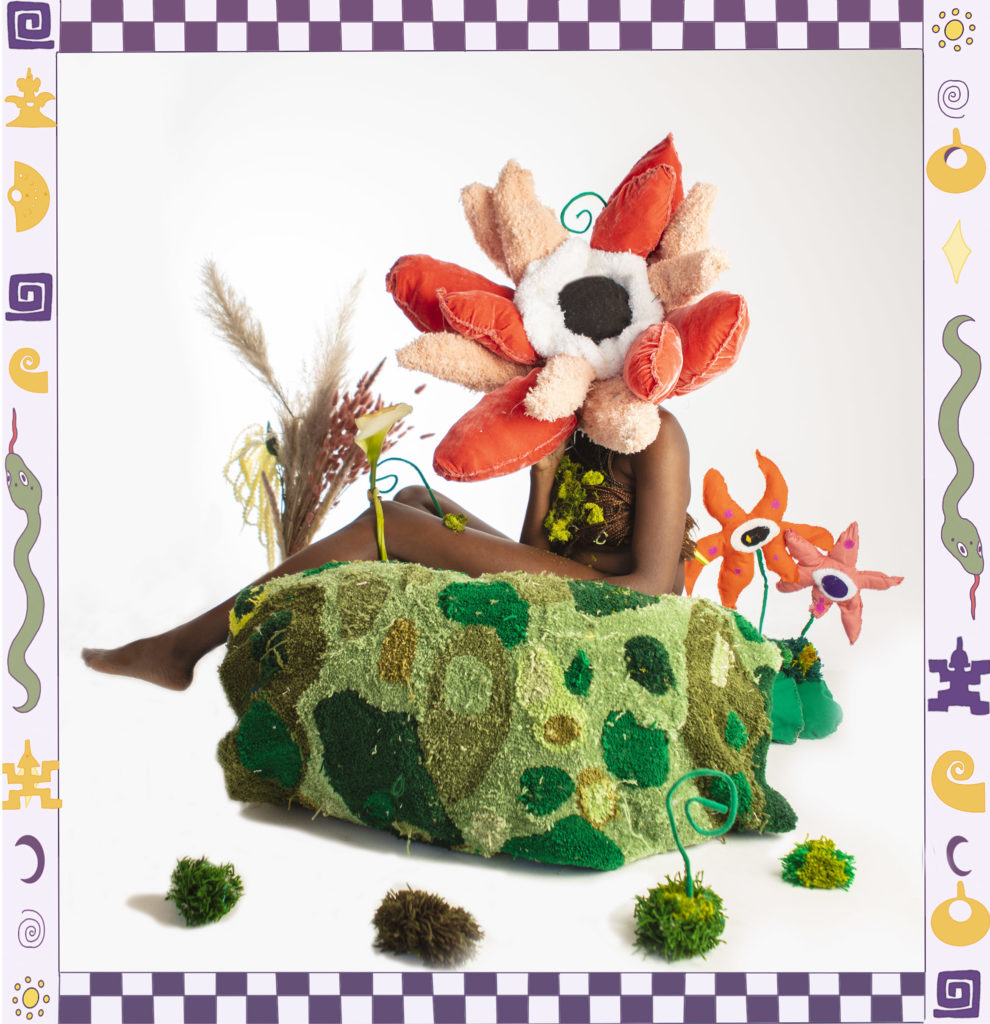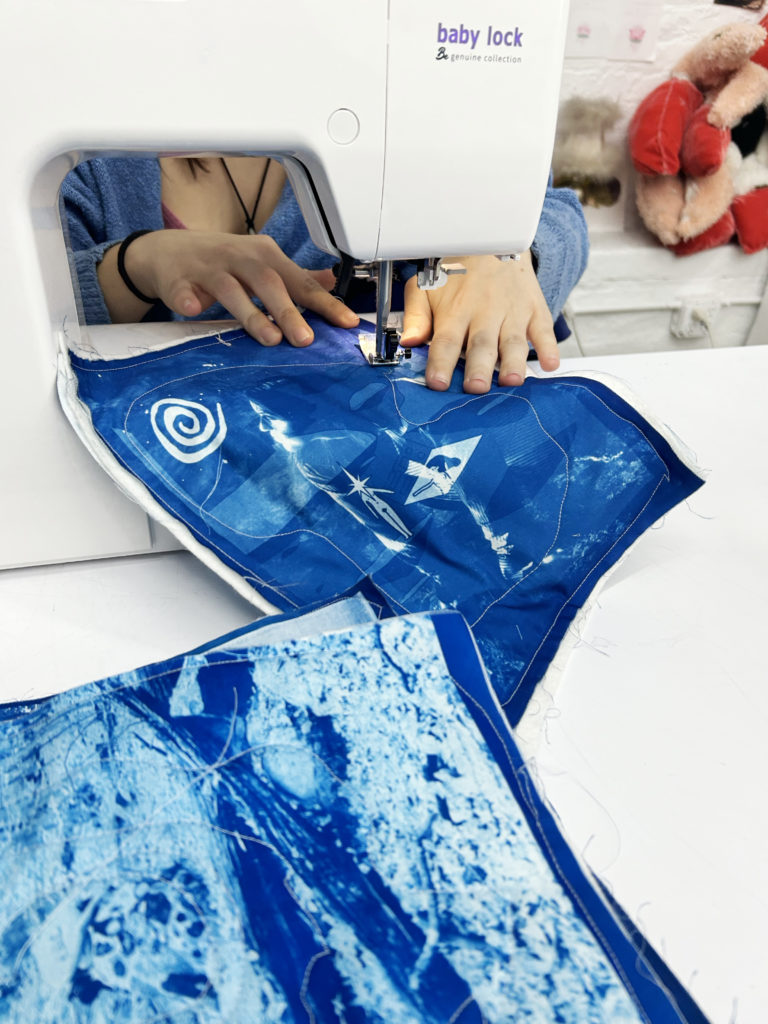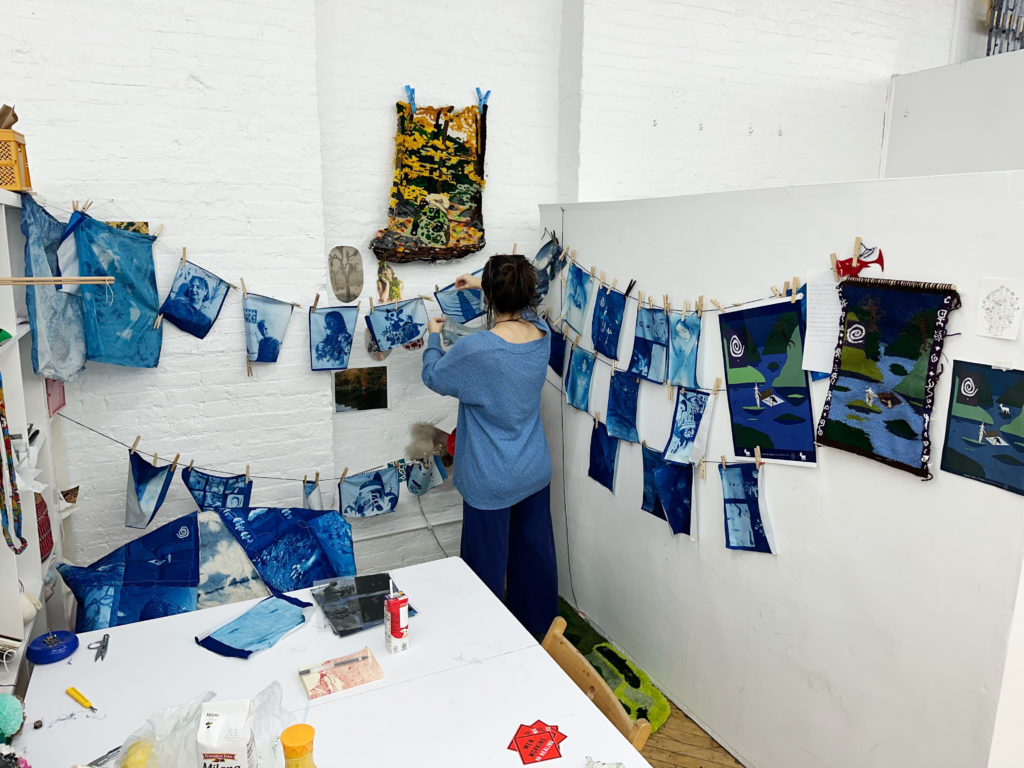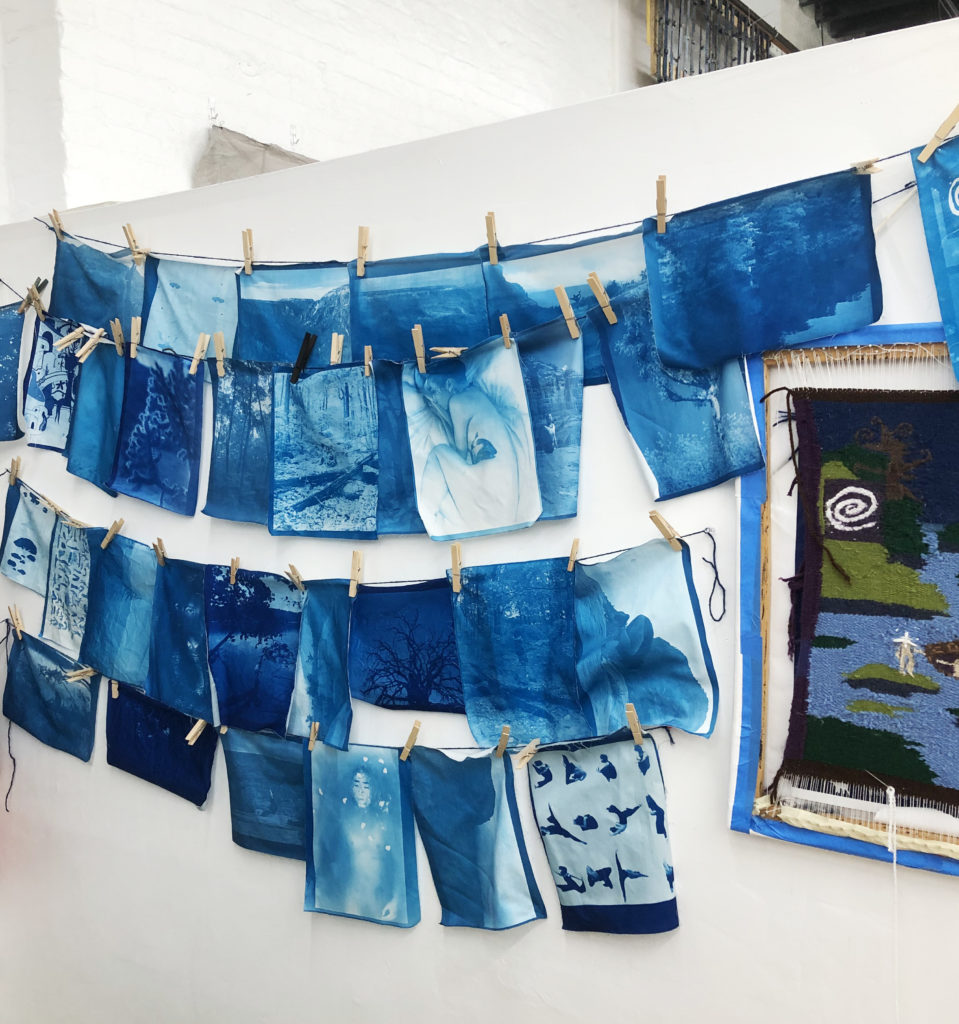AIR 15 Feature: Audrey Cibel
Allison Asselbergs, Artist Programs intern, met with current AIR 15 resident Audrey Cibel: Cibel is a multimedia artist and graduate from NYU Tisch with a focus on fusing fiber arts with image making mediums. Based in New York City, her practice includes rug making, soft sculpture, textile design, illustration, and photography. She has worked as a youth teacher and workshop instructor at textile studios such as Scattered Kind and Textile Arts Center.
"I was thinking about the idea of bouncing between the digital world and the real world, trying to replicate and imitate. Art is really just imitating nature anyways, translating it."

Today I got to sit and chat with Audrey Cibel, a New York based multimedia artist who is a current resident of Textile Art Center’s AIR Cycle 15. Audrey holds a BFA in Photography and Image Making from NYU Tisch and has made a shift in her practice to incorporate illustration, rug making, and other textile work. I asked Audrey about her path from photography to textiles.
Allison: Can you describe your transition from camera-based image making to creating images through tufting?
Audrey: For me it happened during the pandemic, which I feel like happened to most people. I needed something to do, and photography wasn’t satisfying me creatively at that point. Although I was making cyanotypes at that time and I’m doing a project currently on cyanotypes, it’s nice to have a full circle moment. But, at that point I felt like I needed to put it down. I realized that most people in my major were so passionate about aspects of photography that I wasn’t, like the technical parts. I missed the tactile nature of art that I felt when I was a kid. I learned how to sew very early on; my grandmothers are both textile artists. So, I picked up rug-making and I learned how to punch needle, I taught myself how to do it. I was addicted to the practice of it, it really resonated with me. Then I bought myself a tufting gun and started my own at-home business doing commissions. Somehow it branched into this!
Allison: Does tangibility affect your interest and engagement in the medium; could this be a shift away from the digital world?
Audrey: I think so because I was taking, at that time, a lot of classes virtually. That was the Zoom era. I was thinking a lot about the image and being an image maker rather than being just a photographer, so crafting an image by hand was something that came to me. What it means to make an image tangible is a little bit different from sensing an image when its printed and hanging on the wall, or on a screen. I was designing my own images, like illustrating, and also using my photos to make rugs. Some of my rugs are like that, a lot of my designs transfer from the digital realm to the physical realm and then you can literally hold an image. I think it’s a more sensitive way to have an image. I was thinking about the idea of bouncing between the digital world and the real world, trying to replicate and imitate. Art is really just imitating nature anyways, translating it.

I think there’s warmth with textiles. With craft art it’s a very sensory experience that embodies so much more. People put their culture into their craft, their stories into their craft. For me, it’s my spirituality. I see it as a meditation. I think with craft art, because it’s a time-based medium in a different way than photography is a time-based medium, it’s meditative because we’re really taking our time with it.
Allison: You mentioned the idea of holding images. How do you imagine viewers interacting with your work? Do you want it to be observational, interactive, or something else entirely?
Audrey: When I exhibited previously, I let people touch a piece very lightly. I imagine it being more interactive but in a reverent way. Not a sacred object, but something that’s imbued with life energy. There’s not a lot of opportunities to touch things you see in the gallery space, so I feel like I would really love to think of some balance for that. It’s delicate and if somebody touches it the wrong way it could fall apart. I hope to do more interactive things, more immersive things. I’m still thinking about it, but I do want to do something that’s immersive enough for somebody to be inside of. To have your own interpretation of it, and your own experience with it.
Allison: Do you feel like there are any moods or themes that can be better expressed through textile art/rug making compared to other mediums?
Audrey: I think there’s warmth with textiles. With craft art it’s a very sensory experience that embodies so much more. People put their culture into their craft, their stories into their craft. For me, it’s my spirituality. I see it as a meditation. I think with craft art, because it’s a time-based medium in a different way than photography is a time-based medium, it’s meditative because we’re really taking our time with it. We are paying attention to every speck of this thing we are building. I pick very methodical processes that are simple enough to get into a flow state where my body is doing the crafting and moving. It feels like a dance, a very ritual and sacred place in my mind. So that’s where I think craft art differs from other mediums, it’s a lot more involved. You’re activating something, you can’t not put yourself into something you’re doing with your hands.
Allison: What influences your creative process? Do you get inspiration from other artists, musicians, the natural world, or is it more introspective?
Audrey: I think yoga is a huge one. My mom is a yoga teacher, so I’ve been doing yoga my whole life. I got certified as a yoga teacher when I was 18. It’s a huge part of who I am. In yoga, you’re focusing on areas of resistance and pushing against those. I see that as inspiration for my art, thinking of resistance and surrendering, going into the unknown and pushing back on imaginary walls. Working it out like a muscle, my creativity. It’s a discipline that I practice every day. I also think nature really inspires me. I’m really grounding myself in why I gravitate so much towards nature as a safe place of refuge. There’s no difference between us and nature, there’s no separation and there are no walls there. There’s also bringing my art into nature.

Allison: In your opinion, why is textile art important right now?
Audrey: Here at TAC, occasionally I’ll sub for a teacher, and I’ll teach some of the kids. We have a bucket where we ask them to put their phones, some of them already have phones! Just seeing how excited and creative they get when hand-making things. They’re so talented at it. I think it’s so important for everybody to have some type of hobby that isn’t made to sell. Craft art is such a safe place to have a little project that you’re working on. I think it brings people a necessary comfort. It’s really accessible too. I was thinking about the crochet trend during the pandemic, everybody was just obsessed with crocheting. It made me really happy that people were going out and buying yarn and needles. Altogether, I think its just comfort. It doesn’t have to be revolutionary, but I think comfort in itself is revolutionary. Soft power.

From discussing the emotional energy transfers inherent in artmaking to exploring the self-regulatory powers that come with crafting, Audrey had so many thoughtful things to say. Her work can be found at audcib.com, and I definitely recommend checking it out.